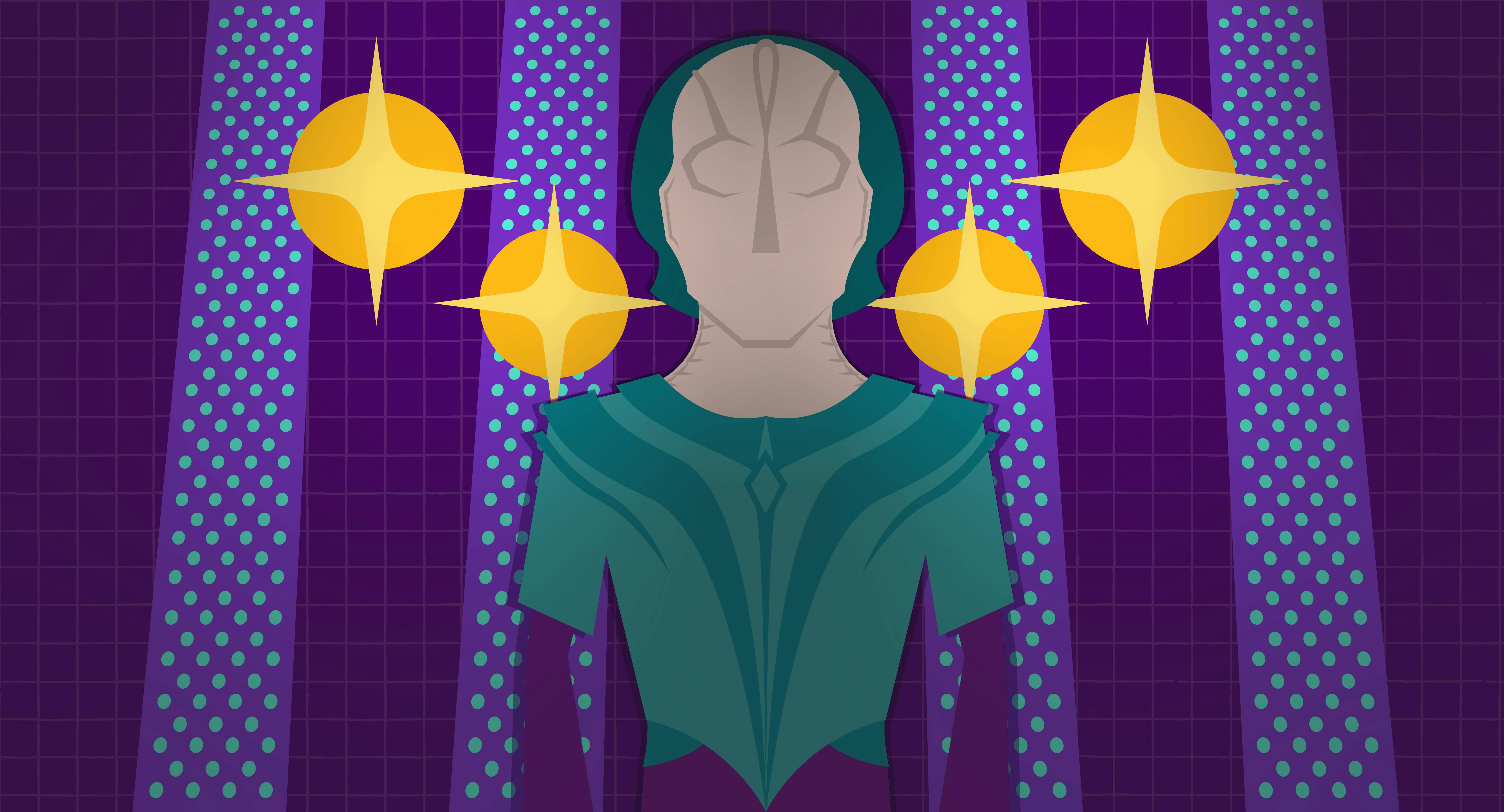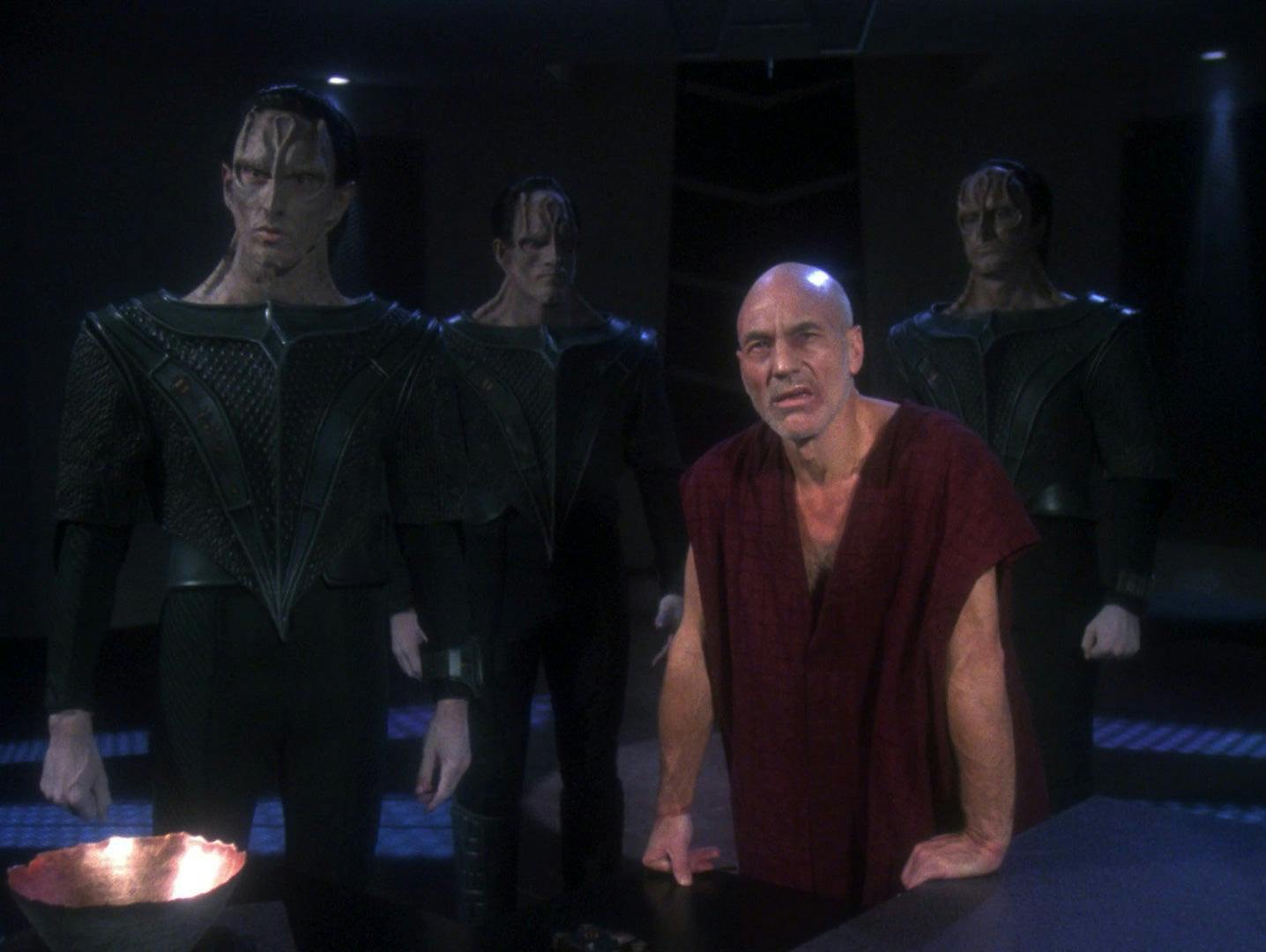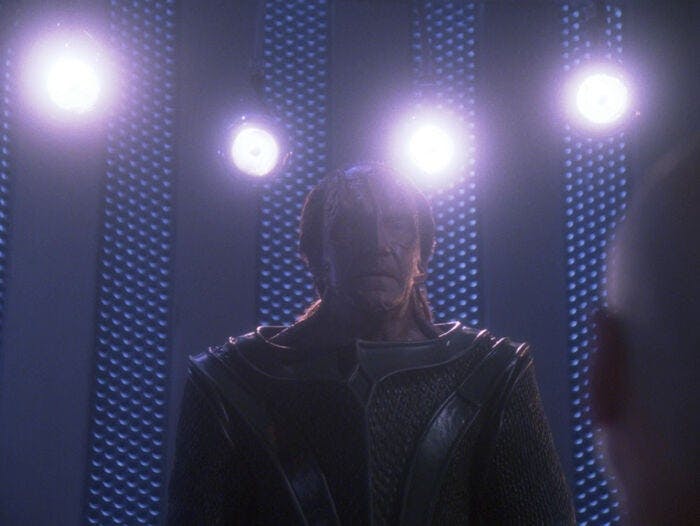Published Dec 14, 2021
The Four Lights
For some fans, "Chain of Command" resonated in a real and terrifying way

StarTrek.com
“There are four lights!”
Those are the final words Captain Jean-Luc Picard shouts out to his torturer, Gul Madred. Good prevails over evil and all is well with the world. And yet, in the epilogue to the story our hero acknowledges that he was ready to capitulate, prepared to recognize a lie as truth: it was the only way to escape physical pain.
"Chain of Command, Part II" is hard to look at under any circumstances. Much of the episode takes place in a torture room with more shadows than lights, with an officer of a dictatorial regime trying — for days — to force the will of a person he can only see as the enemy.
I was a teenager when it was my turn to see it for the first time, at the end of the ‘90s in Argentina —the country where I was born and currently live. It was a moving experience for the audience, but for me it was also the beginning of a journey into a past that I only knew from hearsay.
I'm talking about the last civil-military dictatorship my country experienced. In 1976, the armed forces removed the democratic government through a coup d'état. The military junta remained in power until 1983 and did not leave without first declaring a broad amnesty, later repealed by President Raúl Alfonsín. The official pardon included the crimes against humanity committed by the military and civilians under the dubious cover of what became known as "the Dirty War:" the disappearance of people and the torture to break the ones the military considered the enemy.
Beyond the historiographical controversies that layer this subject, what I want to emphasize is that my interest in understanding the history of my country came after seeing this episode of Star Trek: The Next Generation and the gut-wrenching performance given by Patrick Stewart. When preparing for the episode, Stewart turned to Amnesty International to get videos that helped him understand the suffering and trauma of those subjected to torture. Frank Abatermarco, one of the episode’s writers (along with Jeri Taylor, uncredited), also consulted this organization.

StarTrek.com
A tall tale from a mainstream science fiction series made in a place thousands of miles away from me illuminated a part of my own history that, at least in the last decade of the 20th century, was being swept under the carpet.
"The tragic history of bloody dictatorships in Argentina also made many of us watch Star Trek episodes with different eyes,” argues Tomás Balmaceda, a Doctor of Philosophy with several books published (in Spanish) and hardcore Trekker in the Latin American country. “The tortures that Picard faced in this episode had a profound impact on part of the local audience, which had fresh memories of the excesses and violence that the armed forces exercised on citizens fighting for the return to democracy."
Modus operandi
"Torture is when somebody in an official capacity inflicts severe mental or physical pain or suffering on somebody else for a specific purpose. Sometimes authorities torture a person to extract a confession for a crime, or to get information from them," Amnesty International explains. The Argentine dictatorial government used torture as a way to obtain information about its enemies, the various urban guerrilla organizations that operated here in those years, and others. "Torture methods vary. They can be of a physical nature, like beatings and electric shocks. It can be of a sexual nature, like rape or sexual humiliation. Or they can be of a psychological nature, like sleep deprivation or prolonged solitary confinement".
This is clearly seen in the story directed adroitly by Les Landau: Gul Madred wants to break Picard. "It starts with humiliation, leaving him naked, sleepless and hanging, then physical torture and ends with psychological torture, there is a progression there," says entertainment journalist Pablo Manzotti. Madred strips Picard of his name and will only call him 'human'. Then he hangs him and deprives him of sleep, until finally the direct physical torture begins with a device implanted in the captain's chest.
There are too many stories to tell from Argentina that are similar to what we’ve seen on “Chain of Command, Part II”. Mario Villani was 38 years old when he was held in up to four detention and torture centres for four years. He arrived with his captors at the first illegal prison without being able to communicate with his wife, whom he would not see again for years. He was transferred to at least two more "concentration camps" until he ended up in the ESMA, the Higher School of Mechanics of the Navy, in Buenos Aires, which was converted into what is now known as the largest illegal prison of the last Argentine dictatorship.

StarTrek.com
Since 2004 it’s become the Space for Memory and for the Promotion and Defense of Human Rights. "They had to take me to go to the bathroom, I was dragging the shackles," he remembered during a 2012 interview. "I had to go down the stairs and fell more than once. Apart from the blows from the fall, I was getting the blows I was getting from falling. And if I didn't fall, the guards who passed by would have fun hitting me. He and all his companions, who could only remove their hoods to eat or relieve themselves".
Every totalitarian regime is, by its very nature, paranoid. There's always an enemy lurking. In the case of the Cardassians, their paranoia concerned the Federation and its plans for Minos Korva. But at other times, the Bajorans and the Dominion found themselves in the Cardassians’ paranoid sights. The same thing happened in Argentina: the guerrillas were followed by the British, which led to the War for the Malvinas Islands (called Falklands by the UK) and the loss of power after a humiliating defeat. But there were others.
Perhaps the best known case in the United States is that of Jacobo Timmerman, owner of the newspaper La Opinión. He was kidnapped in April 1977 and released in September of 1979 after significant pressure from US President Jimmy Carter. During his captivity, as he told in Prisoner Without a Name, Cell Without a Number, he suffered the most varied humiliations and also had the sad opportunity to hear how others were suffering. What was he accused of? Simply being Jewish. Anti-Semitism ran deep within some factions of the Argentine military.
Grayscales
Fiction, in a way, is reality seen ‘through a glass, darkly’. Star Trek producer Rick Berman defined it perfectly in the book Star Trek: Voyager - A Vision of the Future: "Science fiction, to me, by definition, is the ability to take something that is very human... a quality, a characteristic, a prejudice even... and kind of turn it around on its ear a little bit and look at it from another perspective. Letting people, in not a very abstract fashion, watch a show and think about it, and think what it means and discuss it with your family."
That impact, that kick in the gut, didn't just happen to me. Gabriela Margall, Argentinian historian and popular writer of historical fiction, recalls that she felt the impact when she saw “Chain of Command” for the second time when she was already a university history student. She ultimately wasn't able to see the episode because it still affects her emotionally. “When I'm rewatching the whole series, I skip it,” Margall explained. “I can't stand the torture scenes.”

StarTrek.com
The dictatorship also left a mark on Argentine narrative and, more specifically, on its science fiction. Science-fiction author Alejandro Alonso often finds himself exploring the theme. "I'm a post-dictatorship writer. Inevitably, what I write bears a mark, or many of them. Although I write genre literature, it is not difficult to find in certain texts the evocation or invocation of themes related to the Dictatorship. It is something that exceeds me, that I do not seek."
He is not very impressed by the Klingons and their warlike impulses, or by the Cardassians and their bureaucratic barbarism. "Powerful bureaucrats are particularly fond of distorting time and rewriting reality and history (as George Orwell portrayed it in 1984, a novel I recalled several times while watching the episode), perhaps as a way of destroying the last stronghold of individuality and resistance of their victims. In a way not often seen on TV at the time, that episode was in dialogue with some (few) personal experiences, with what I knew (or had been told) about the Dictatorship, with my readings and with the good science fiction films I had seen".
Beyond how "Chain of Command, Part II" manages, perhaps unintentionally, to make us Argentinians see ourselves reflected in a particular way, the story told is universal and reveals the most frightening truths about human beings. Alonso puts it better: "Is it necessary to appeal to this barbarism so that society (in this case, Cardassian society) can survive? Does this end justify all these aberrant means? If we were at war, then should we respond in a different way to what we promote during times of peace? Our failure as a society is that we have not been able to give a forceful, absolute and imperishable answer to these questions.”
Sebastian De Toma (he/him) is an Argentinian freelance journalist, editor, and communications specialist. He writes regularly for the tech & biz magazine Infotechnology, the economic newspaper El Cronista Comercial, and many other local outlets. He loves Star Trek since the first time he laid eyes on space station Deep Space Nine and is also a sci-fi buff. Find him on Twitter @sebadetoma.

